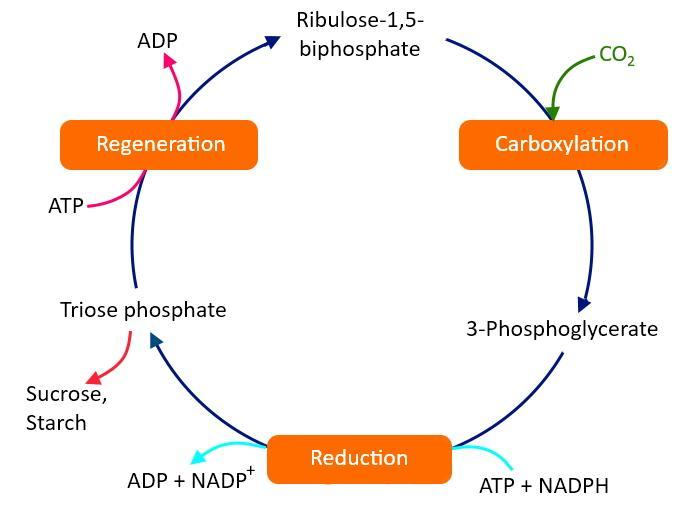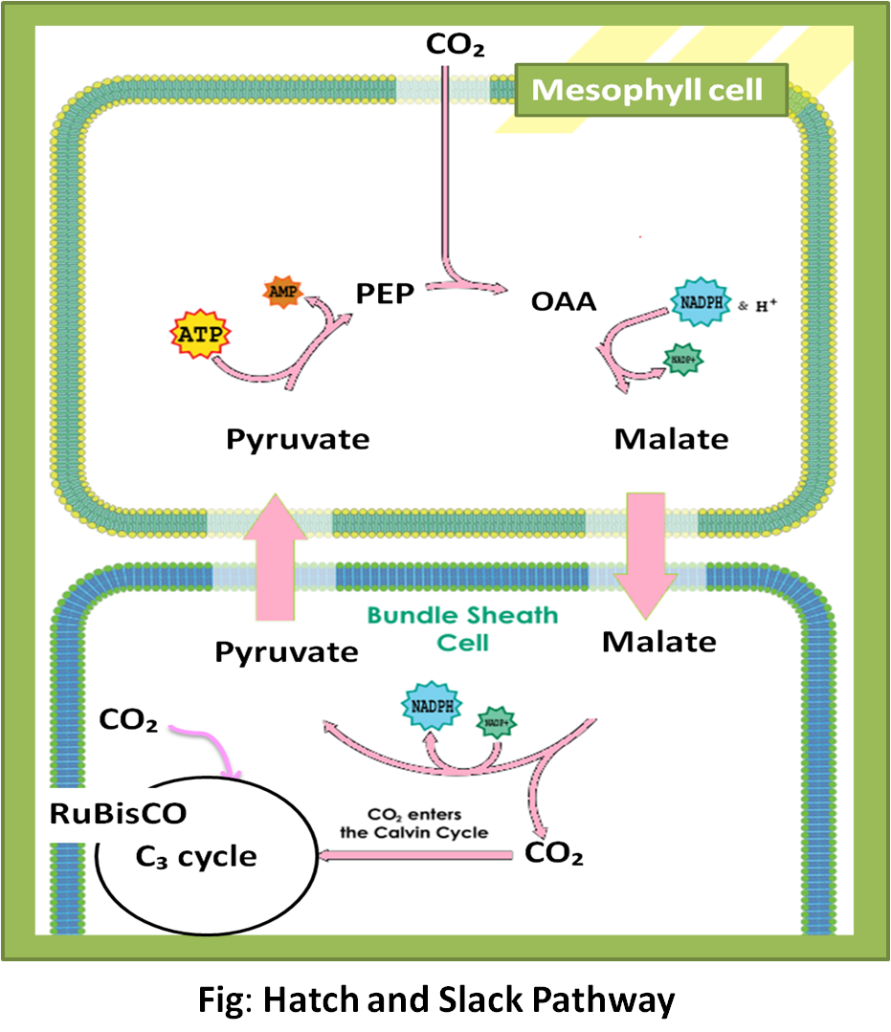
Which is the primary
Answer
434.1k+ views
1 likes
Hint: Plants, which do not have the adaptation to combat photorespiration (a wasteful process), such plants are known as
Complete answer:
The primary
C3 cycle or Calvin cycle: In the Calvin cycle, the carbon dioxide acceptor molecule is RuBP and the enzyme catalyzing this reaction is RuBP carboxylase. In this process, the reduction of carbon dioxide gives the first stable product, a three-carbon compound, which is 3-phosphoglyceric acid or 3PGA. The plant which follows the
First reaction of

Figure: Complete the
The first reaction of the

Additional Information:
Photorespiration: It is a reverse process as compared to photosynthesis. It involves the uptake of
Photorespiration is a wasteful process because no energy-rich compound is produced and loss of carbon takes place during such a process. This process has a significant impact on
Note:
- The leaves of
- The leaves of
Complete answer:
The primary
C3 cycle or Calvin cycle: In the Calvin cycle, the carbon dioxide acceptor molecule is RuBP and the enzyme catalyzing this reaction is RuBP carboxylase. In this process, the reduction of carbon dioxide gives the first stable product, a three-carbon compound, which is 3-phosphoglyceric acid or 3PGA. The plant which follows the
First reaction of

Figure: Complete the
The first reaction of the

Additional Information:
Photorespiration: It is a reverse process as compared to photosynthesis. It involves the uptake of
Photorespiration is a wasteful process because no energy-rich compound is produced and loss of carbon takes place during such a process. This process has a significant impact on
Note:
- The leaves of
- The leaves of
Latest Vedantu courses for you
Grade 7 | CBSE | SCHOOL | English
Vedantu 7 CBSE Pro Course - (2025-26)
School Full course for CBSE students
₹45,300 per year
Recently Updated Pages
Master Class 9 General Knowledge: Engaging Questions & Answers for Success

Master Class 9 English: Engaging Questions & Answers for Success

Master Class 9 Science: Engaging Questions & Answers for Success

Master Class 9 Social Science: Engaging Questions & Answers for Success

Master Class 9 Maths: Engaging Questions & Answers for Success

Class 9 Question and Answer - Your Ultimate Solutions Guide

Trending doubts
State and prove Bernoullis theorem class 11 physics CBSE

What are Quantum numbers Explain the quantum number class 11 chemistry CBSE

Who built the Grand Trunk Road AChandragupta Maurya class 11 social science CBSE

1 ton equals to A 100 kg B 1000 kg C 10 kg D 10000 class 11 physics CBSE

State the laws of reflection of light

One Metric ton is equal to kg A 10000 B 1000 C 100 class 11 physics CBSE




